Enlighten Me Please
Tato Kotetishvili’s Holy Electricity (2024)
Vol. 147 (September 2024) by Konstanty Kuzma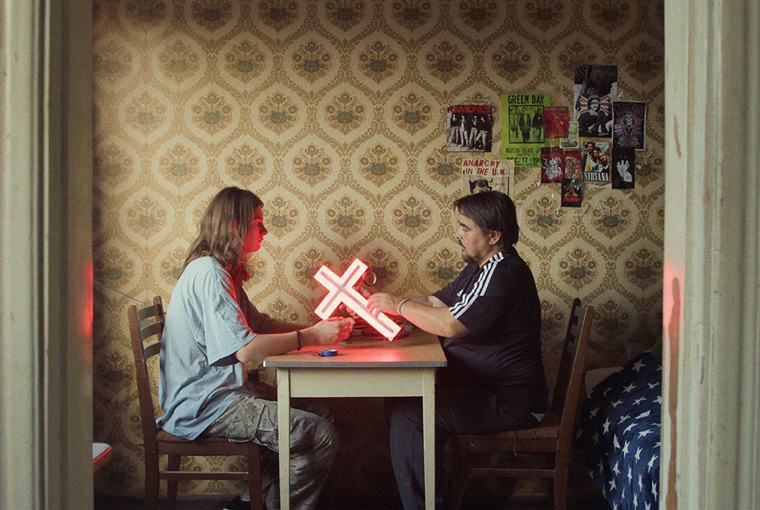
In Holy Electricity, Tato Kotetishvili’s first feature film, two Tbilisi-based scrap collectors try to make ends meet. Living off the waste of society, Gonga and his uncle Bart embody peripheral existence. They surround themselves with people from the trans community, the lower classes, ethnic minorities, and the circus, and spend their days traveling around man caves and collectors’ homes in search of their next scoop. As Kotetishvili is quick to point out, their world is beautiful in its own way, generating both pleasing images and its own forms of love and community. Despite this familiar set-up of unveiling meaningful existence where it tends to be overlooked, which often comes with a fetishization of weirdness (see the films of Leos Carax or Harmony Korine), the film does manage to go places that are genuinely fringe from an outsider’s perspective. Notably, it incorporates trans people and Roma in a filmmaking process that lends the actors a great deal of freedom by allowing them to improvise, which is sadly at least as bold (if not unparalleled) in Tbilisi, Georgia as it is elsewhere.
The film progresses through a series of loosely connected vignettes that depict the everyday life of Gonga (Nika Gongadze) and Bart (Nikolo Ghviniashvili). The film explores their job – collecting and sorting scrap and selling it on Tbilisi’s famous flea market on the so-called Dry Bridge –, as well as their free time, especially shared meals during which they discuss love interests and money issues. While the focus is clearly on them – the young, lanky, and long-haired Gonga, and the short, round, and scruffy Bart –, minor characters gradually get drawn into the film as well, notably Gonga’s and Bart’s love interests and potential sellers, who partly appear to be passersby that have been recruited spontaneously after their interactions with the two leads.
Needing quick money, at one point the protagonists come up with the idea of building LED-lit crosses from the scrap they collect, which they manage to sell more or less profitably – perhaps a metaphor for the rejuvenating and transformative potential that youthful Gonga and trans man Bart bring to a traditionally religious country such as Georgia (as I have been made aware of, the image of the LED-lit crosses may also just be a joke or gimmick). The duo’s mildly successful invention not only produces yet more aestheticized images. It also replaces the film’s focus on scrap collecting to product selling, which puts Bart and Gonga in new situations through which Kotetishvili can explore their material and social surroundings.
While the film willingly dwells in ruin porn, aestheticizing the protagonists’ desolate surroundings to the point of artifice, its originality and strength lies in Kotetishvili’s interest in creating spontaneous moments on set. That the main achievement of Holy Electricity should lie in the directing department may seem curious given Kotetishvili’s background in cinematography, yet the issue with the cinematography is certainly not a lack of skill. The main problem is that Kotetishvili treats his images as two-dimensional still frames composed merely for their beauty. In other words, he seems uninterested in breaking up the space to create layers, movement, or any dynamic relations between persons and objects, which may be part of the reason why many of his images lack depth, at most playing around with two visual planes and a predefined focus of attention.
This makes it all the more surprising that the story should preserve its spontaneous touch, which is a function of Kotetishvili treating the script – co-written alongside Irina Jordania and Nutsa Tsikaridze – as a road map rather than an instruction manual. The non-actors he was working with were actively encouraged to react spontaneously to the situations that the script put them into. Though Kotetishvili has spoken about this approach extensively,1 it is immediately obvious from watching the film, which sometimes verges on becoming a documentary as we watch the protagonists interact with each other or with minor characters during encounters that are often open-ended and almost always awkward.
Of course, the improvisational approach also comes with risks. Unfortunately, in some rare cases, it falls entirely flat even on a surface level, especially with minor characters, who obviously did not have the time to get comfortable enough vis-à-vis the camera to try and improvise more or less freely. Thus, when Gonga’s love interest tries to help him sell his crosses, their interactions with potential sellers seem staged and unrevealing. Dramaturgically, the spontaneity leads to a lack of structure, which is not half as bad as Kotetishvili deciding to distract from it by inserting an all too obvious set-up and subsequent conflict into the story. Specifically, Bart owes two mafiosi money. Later on, after the henchmen begin actively chasing Bart, Gonga will give him money to pay them off, only to see his uncle gamble it away. And so, the two temporarily part ways to chase their respective love interests, but reemerge together in the last third of the film. That they part ways and ultimately join forces again remains forced on the story with the help of the gangster movie set-up, perhaps because Kotetishvili and his actors found no way of having the conflict grow organically from the story.
That the film should blow a fresh breeze despite these shortcomings is because Kotetishvili put in the work to get to know his actors and find a way of working with them that will release a sort of authenticity that almost seems foreign. Here is a film that is willing to engage with the unfolding relations between its (non-)actors – however awkward and/or different they may be from the ones the characters play out on screen. Either way, awkwardness, intimacy, and friendship bleed into a frame that is not infused with a cathartic message. Instead, the viewer is invited to engage with the characters or perhaps with the actors themselves as they adapt to their ever-changing surroundings. Sure, the artificial and rigid imagery and the fact that the actors did sometimes try and act instead of improvising do lead to a bitter aftertaste – when Bart faces the mafiosi, Holy Electricity briefly morphs into a conventional, mediocre gangster film –, but the very fact that Kotetishvili tried something different here should be highly regarded.
Holy Electricity was put on the map at a time when Georgian cinema is said to be facing a crisis. In August 2023, a group of 200 domestic filmmakers announced a boycott of the Georgian National Film Center (GNFC) due to alleged political meddling in both appointments and funding decisions,2 a number which has since grown to about 500.3 Though Kotetishvili’s project was backed by the GNFC, he claims never to have received the last tranche of public funding promised to him following the appointment of culture minister Tea Tsulukiani, which reflects an increasingly volatile relationship between film professionals and the state.4
The fact of the matter is that it is now, that is more than a decade after Georgian cinema was declared to be experiencing a rebirth, that there appears to be a genuine opportunity for Georgia to break free from its creative dearth. At the 2013 Berlinale, the festival’s programmers had announced the emergence of a “new generation of filmmakers”. Ever enthusiastic about the state of European cinema, the media platform Cineuropa even contemplated the announcement of a New Wave.5 As per the Berlinale program, this new generation of Georgian filmmakers was “starting out by remembering its own history”.6 And indeed, history figured in Georgian films circulating in European film festivals in the mid-2010s, chiefly the difficult period in the 1990s, in which Georgians gained independence following the disintegration of the Soviet Union only to face civil wars and destitution. With the Romanian New Wave (or whatever you want to call it) still fresh in everyone’s memory, the hope of the Berlinale programmers appeared to be that they would be the first festival to identify and give a platform to the next European film movement. Here was a small country with a cinematic tradition whose cinematic output was converging around social and political themes.
What the Berlinale programmers did not appear to realize at the time was that the mid-2010s “movement” that they were discovering was their own creation. The fact that Georgian cinematic output converged around certain social and political issues was a product of the institutional logic of European film festivals, which favor films addressing political and social issues, especially in countries far away. Besides, a closer look reveals that most Georgian films celebrated at the Berlinale back then were not even interested in socio-political issues in any substantial way. Take In Bloom (2013) by Nana Ekvtimishvili and Simon Groß, about which the above statement was written, and which nominally deals with the 1990s but says nothing that will help us understand either that time or today’s reality. Or Tinatin Kajrishvili’s Brides (2014), which the Berlinale presented as a film addressing the “repressive judicial system in Georgia,”7 although it in no way deals with the unveiling of systemic torture in Georgia’s prison system in 2012 that contributed to the downfall of former president Mikheil Saakashvili and his government.8
Georgian cinematic output has not entirely escaped this dynamic, for how could it when filmmakers across Europe are dependent on the big players of the festival landscape? In Holy Electricity, the sub-plot about Bart being trans remains utterly underdeveloped, not doing much for the film (let alone for understanding towards trans people) except showing that the filmmakers are on the right side. Still, Georgian cinema – and that includes this film – has largely eluded reductionist taglines as of late. Its output is no longer geared towards the Western viewer, at least not exclusively, and it has managed to gravitate towards genuine social criticism.
It may thus be no surprise that the Georgian government has reacted with disdain to more recent cinematic developments, with leading politicians scathing directors such as Salomé Jashi.9 In her 2021 documentary Taming the Garden, Jashi had portrayed the Georgia of Bidzina Ivanishvili, a billionaire who in 2012 replaced Saakashvili’s technocratic authoritarianism (which was dependent on Western backing and thus on surface legitimacy) with what would ultimately become a populist authoritarianism fueled by Ivanishvili’s personal funds. As the film unearths, this gives Ivanishvili power so great that he can literally move trees. (A related story also involving Mr. Ivanishvili’s omnipresent reign was recently told by Mariam Chachia and Nik Voigt in Magic Mountain.)
Following the closing of national cultural institutions such as the Georgian Book Center and the oppressive rule of culture minister Tea Tsulukiani, who has gotten rid of various critical voices in key positions across the cultural sector since assuming office in 2021, Georgian cinema has begun to reinvent itself outside of its largest domestic film institution. As we write in our current editorial, this does not always have to be a bad thing. The Georgian National Film Center may be too encrusted to ever be de-politicized in any meaningful way, and the real aim may not be to reform but simply abolish it altogether. In such a scenario, an organization like the newly formed, independent Georgian Film Institute could replace it until the day when it, too, becomes another behemoth guarding the revolving doors of Europe’s film landscape.
- “Holy Electricity – Press Conference #30thSFF”. YouTube. https://www.youtube.com/watch?v=zIdPJfoGFvc [Accessed on 13 January 2025]. ↩︎
- “200 Georgian Filmmakers Boycott the National Film Center”. Civil Georgia. https://civil.ge/archives/556457 [Accessed on 13 January 2025]. ↩︎
- “Leading Georgian filmmakers boycott state-backed National Film Centre”. ScreenDaily. https://www.screendaily.com/news/leading-georgian-filmmakers-boycott-state-backed-national-film-centre/5189158.article [Accessed on 13 January 2025]. ↩︎
- A little neon intervention: Holy Electricity by Tato Kotetishvili. IFFR. https://iffr.com/en/blog-a-little-neon-intervention-holy-electricity-by-tato-kotetishvili [Accessed on 13 January 2025]. ↩︎
- Berlinale: An impressive update of Greek tragedy as form in Brides. Cineuropa. https://cineuropa.org/en/newsdetail/252344/ [Accessed on 13 January 2025]. ↩︎
- Berlinale 2013 Catalog Entry for “Grzeli Nateli Dgeebi”. https://www.berlinale.de/external/programme/archive/pdf/20136922.pdf [Accessed on 13 January 2025]. ↩︎
- Berlinale 2013 Catalog Entry for “Patardzlebi”. https://www.berlinale.de/external/programme/archive/pdf/20143176.pdf [Accessed on 13 January 2025]. ↩︎
- For detailed criticisms of both films, see my reviews of In Bloom and Brides respectively. ↩︎
- “Georgian Film, Celebrated Abroad, Under Fire At Home”. RFE/RL. https://www.rferl.org/a/georgia-film-industry-government-censorship-sanitization/32518566.html [Accessed on 13 January 2025]. ↩︎
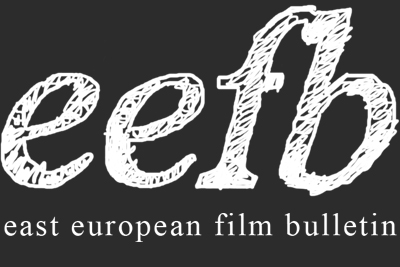
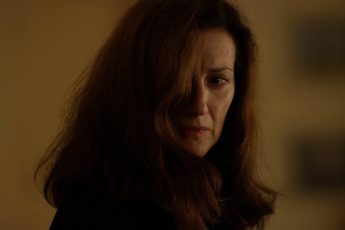
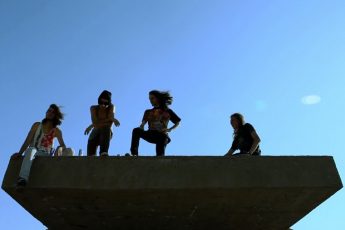
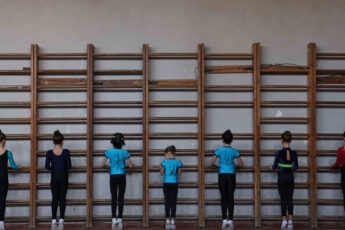
Leave a Comment